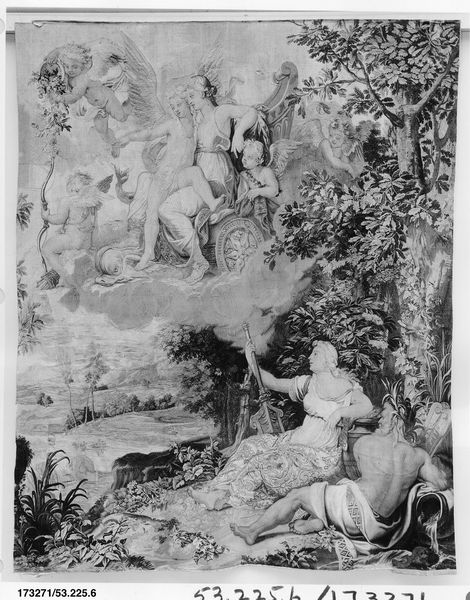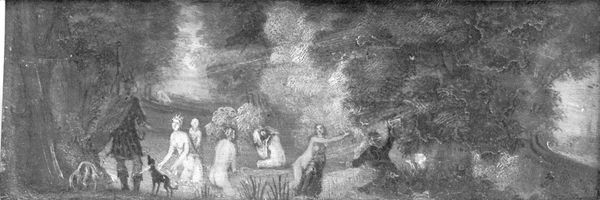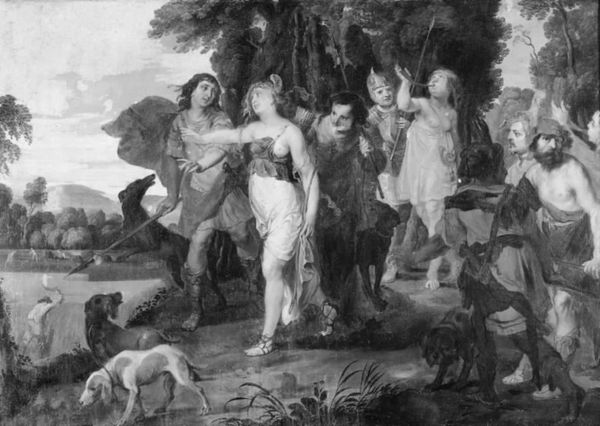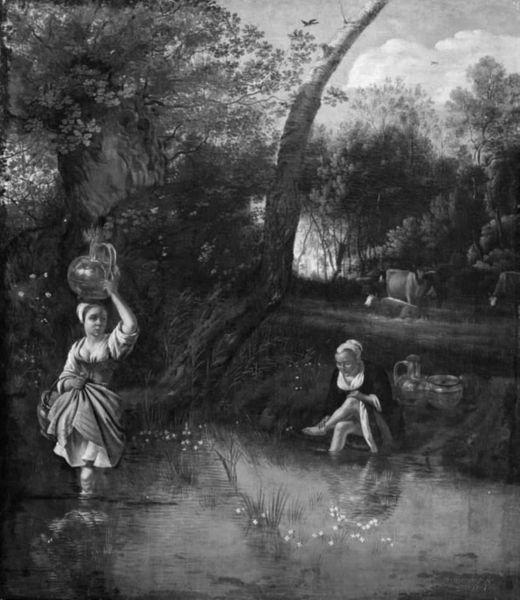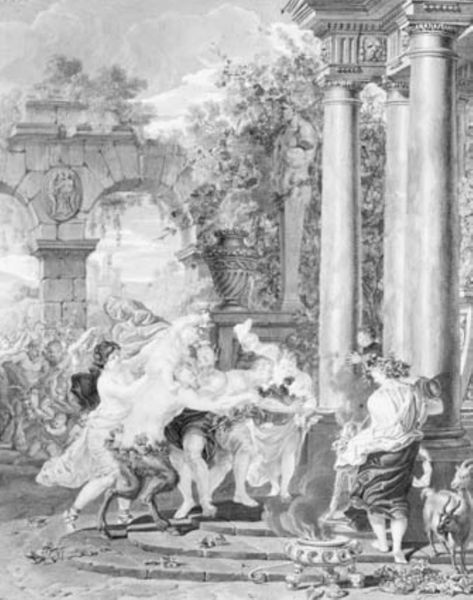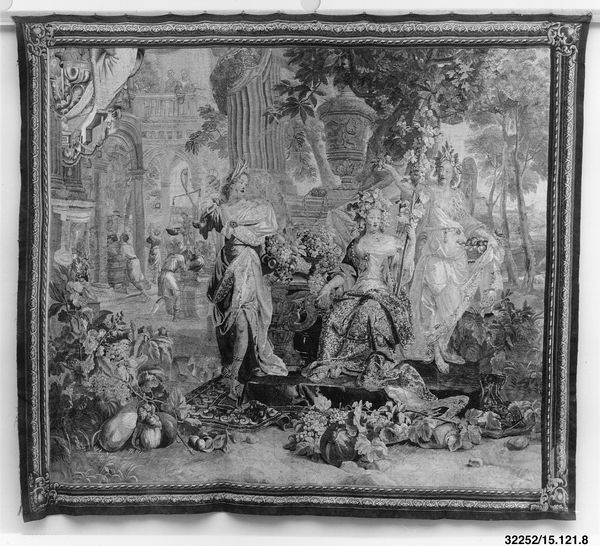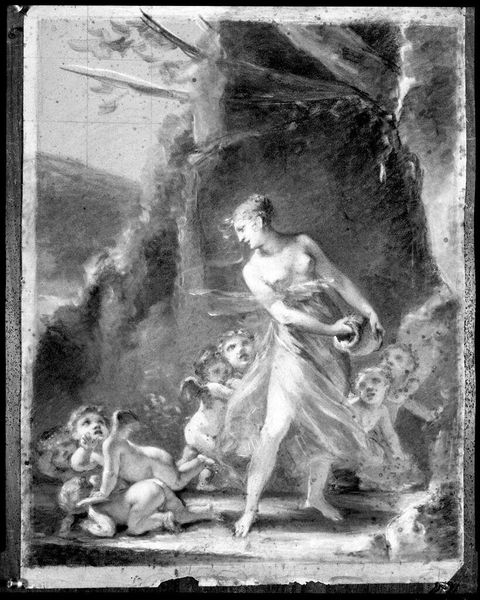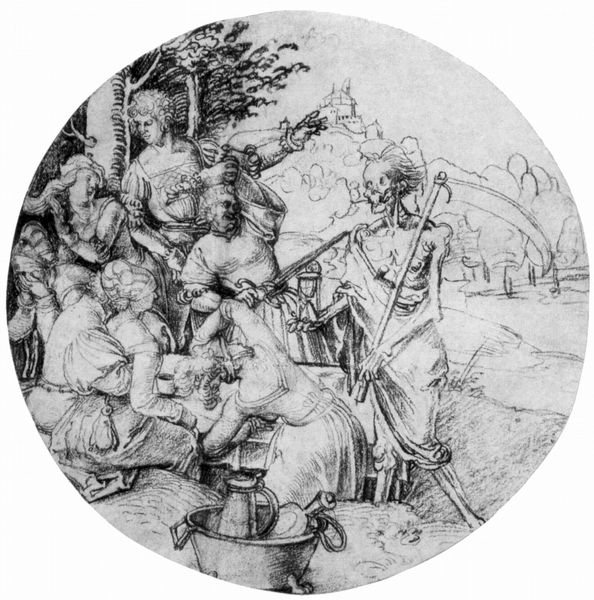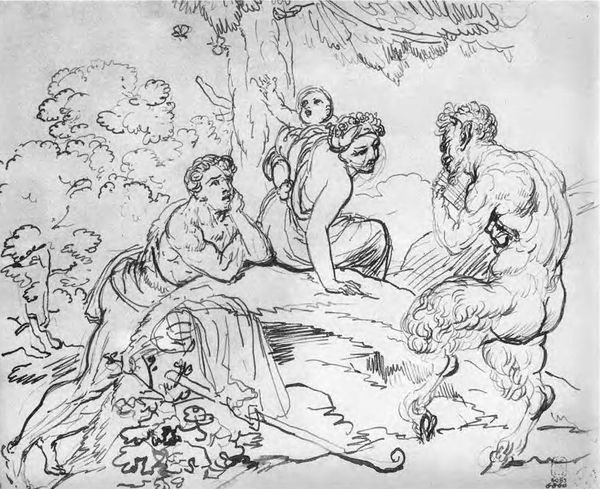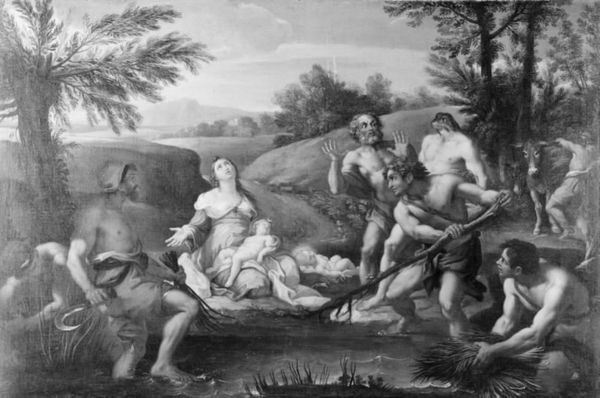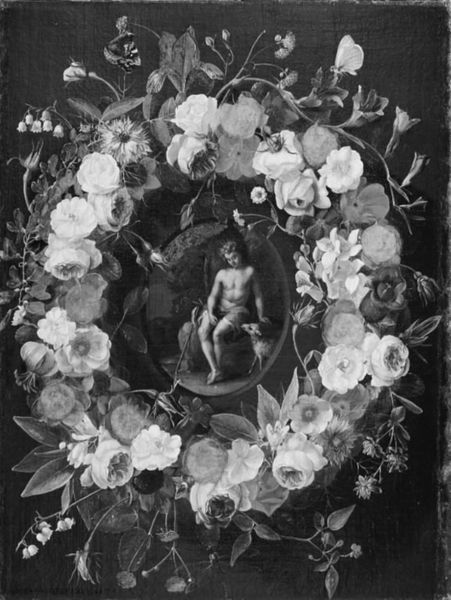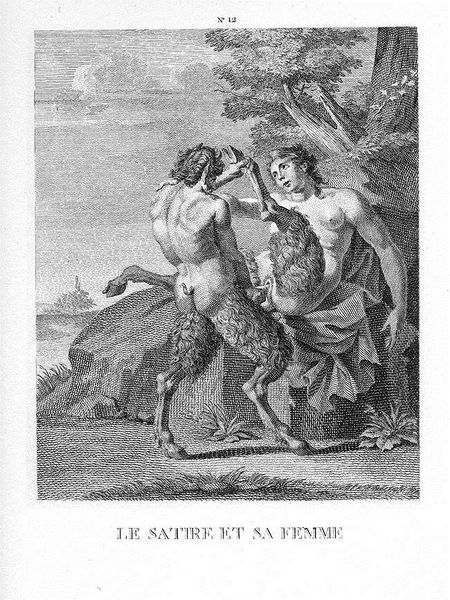
Shepherds and Shepherdesses Dancing from a set of Mythological Subjects after Giulio Romano 1684 - 1692
0:00
0:00
textile, sculpture
#
baroque
#
landscape
#
textile
#
figuration
#
sculpture
#
black and white
#
history-painting
#
decorative-art
Dimensions: 12 ft. × 11 ft. 6 in. (365.8 × 350.5 cm)
Copyright: Public Domain
Curator: Here we have "Shepherds and Shepherdesses Dancing from a set of Mythological Subjects after Giulio Romano," dating back to between 1684 and 1692. It's currently held at the Metropolitan Museum of Art. Editor: My initial reaction is drawn to the texture. It's this riot of visual activity in black and white, like a woven photograph documenting frenetic motion, freezing dancers mid-celebration, yet I also find it slightly grim. Curator: Well, bear in mind that it is a textile, a tapestry, based on designs attributed to Giulio Romano, an Italian painter and architect who operated primarily in Rome and Mantua. These tapestries served decorative and symbolic functions in aristocratic settings. Consider the social context – power, wealth, display – and how these mythological scenes reinforced cultural values. Editor: Absolutely, but even the most meticulously crafted representation is still rooted in material reality. Think about the labor involved in creating something of this scale; the weavers, the dyers, the very sheep providing the wool. It would've been a substantial investment of material and skill. This impacts not only the artistic choices, such as what to depict and how, but also its perceived value. The weaving is more than just passive ornament. Curator: It’s certainly intended as more than mere decoration. These mythological subjects would've been immediately legible to a courtly audience, reinforcing classical learning and conveying messages about rulership, pleasure, and societal order. Giulio Romano was well known as the protégé of Raphael. This tapestry is decorative and of a scene intended for the refined tastes of the educated elite. Editor: What about that crumpled figure at the bottom left? The discarded objects? I would read the items strewn around, like discarded instruments. Are we truly to assume a pure classical allusion to power if labor literally litters the ground? I imagine that's something its commissioner would want kept silent about in any symbolic or social understanding of the weaving. Curator: You make a compelling point about the contrasting readings we can apply. The image functions as an elaborate emblem, drawing upon classical mythology to create a narrative that would uphold their political, social, and cultural positions. Tapestries were inherently mobile signs of status and authority. Editor: Ultimately, regardless of the symbolic register, it still is textile. These fibers tell tales that reach back into material and craft, echoing processes of creation beyond any symbolic claim of dominion. The physical labor remains embedded in every thread.
Comments
No comments
Be the first to comment and join the conversation on the ultimate creative platform.

